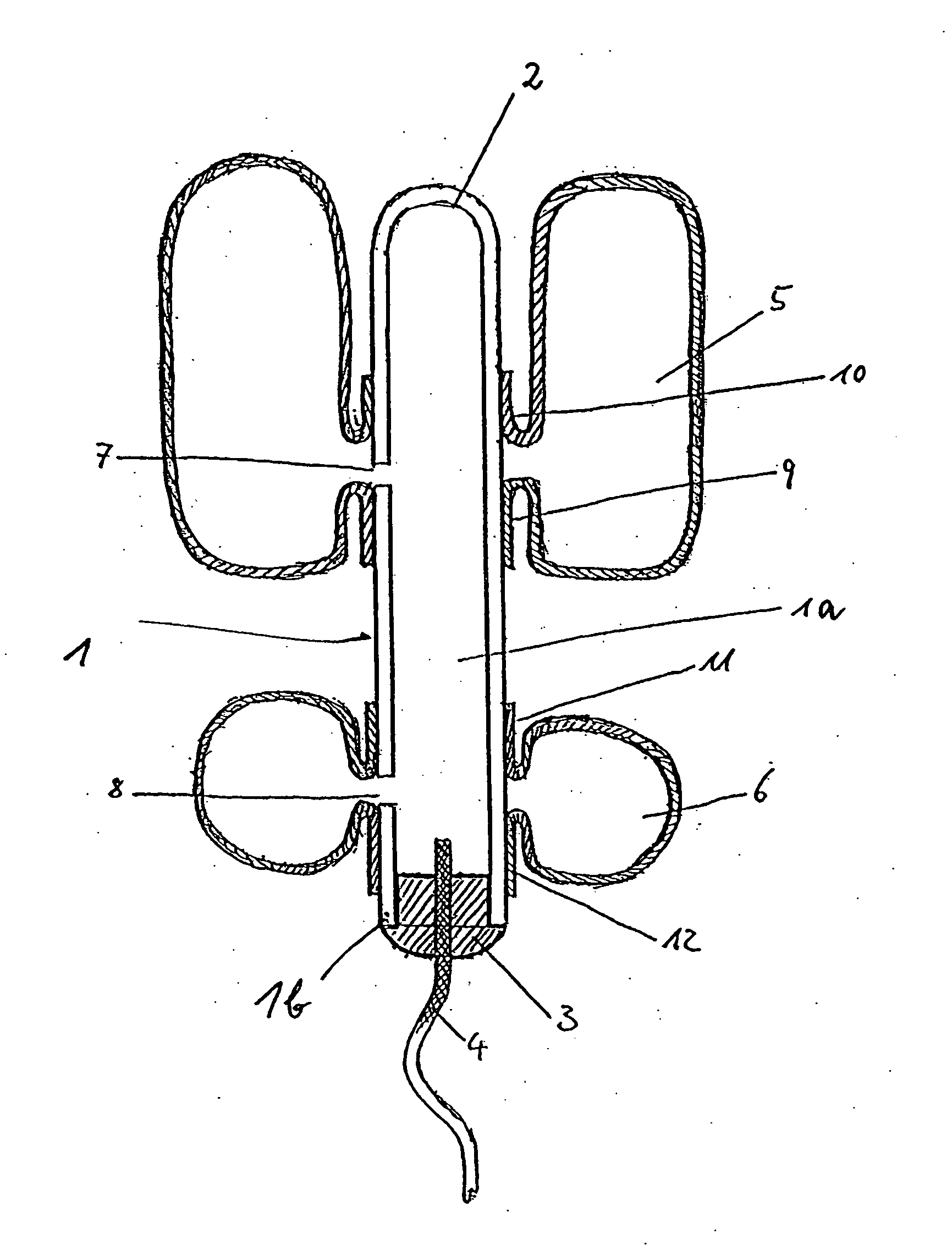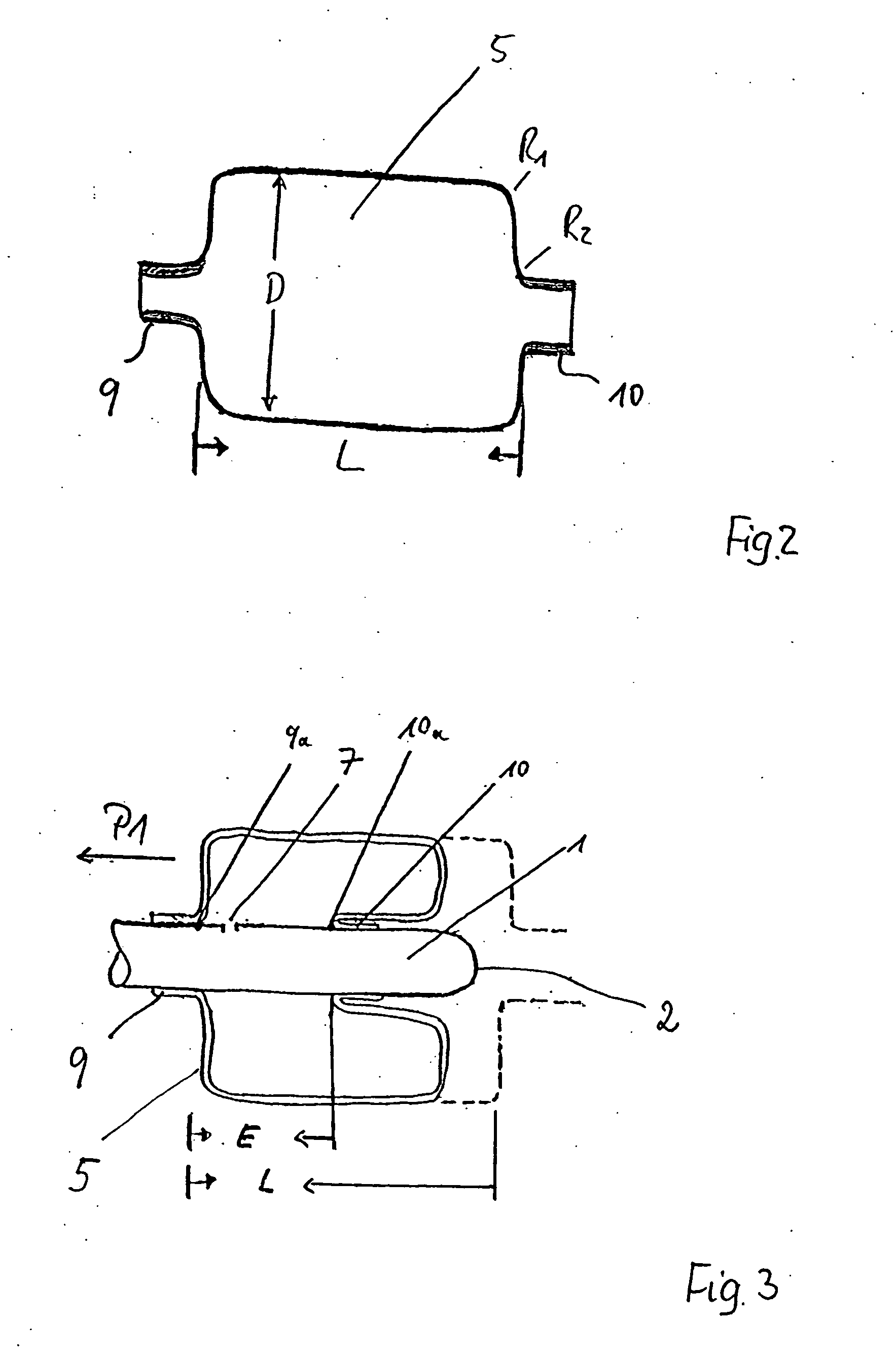Closure system for managing rectal or anal incontinence
a technology for rectal or anal incontinence and closure system, which is applied in the direction of anti-incontinence devices, dialysis, surgery, etc., can solve the problems of triggering the defecation reflex, the urge to empty the bowels, and the inflator body of conventional rectally sealing balloons is inflated with a relatively high filling pressure, so as to avoid the risk of trauma in long-term use
- Summary
- Abstract
- Description
- Claims
- Application Information
AI Technical Summary
Benefits of technology
Problems solved by technology
Method used
Image
Examples
Embodiment Construction
[0047]FIG. 1 schematically shows one preferred embodiment of the closure system according to this invention, in the form of a rectal closure for managing rectal and anal incontinence. The shaft element 1 is embodied in a form of a tube with a circular cross-section, having one end oriented toward the rectum, for example its distal end, and closed by an atraumatically rounded tip 2. Ideally, the shaft element 1 should not exceed an outer diameter of approx. 12 mm. The shaft element lumen 1a extending from the atraumatic distal end 2 of the shaft element to the proximal end 1b is closed, for example by a cap, at the open proximal end 1b, which lies outside the body during use. The inflation line 4 is routed through a sealing body 3 and can fill the lumen 1b and the balloon with which it communicates with filling medium. The end of the inflation line 4 has a closure valve, not shown here, suitable for use of gas and fluid as the filling medium. The valve is integrated into a so-called ...
PUM
 Login to View More
Login to View More Abstract
Description
Claims
Application Information
 Login to View More
Login to View More - R&D
- Intellectual Property
- Life Sciences
- Materials
- Tech Scout
- Unparalleled Data Quality
- Higher Quality Content
- 60% Fewer Hallucinations
Browse by: Latest US Patents, China's latest patents, Technical Efficacy Thesaurus, Application Domain, Technology Topic, Popular Technical Reports.
© 2025 PatSnap. All rights reserved.Legal|Privacy policy|Modern Slavery Act Transparency Statement|Sitemap|About US| Contact US: help@patsnap.com



